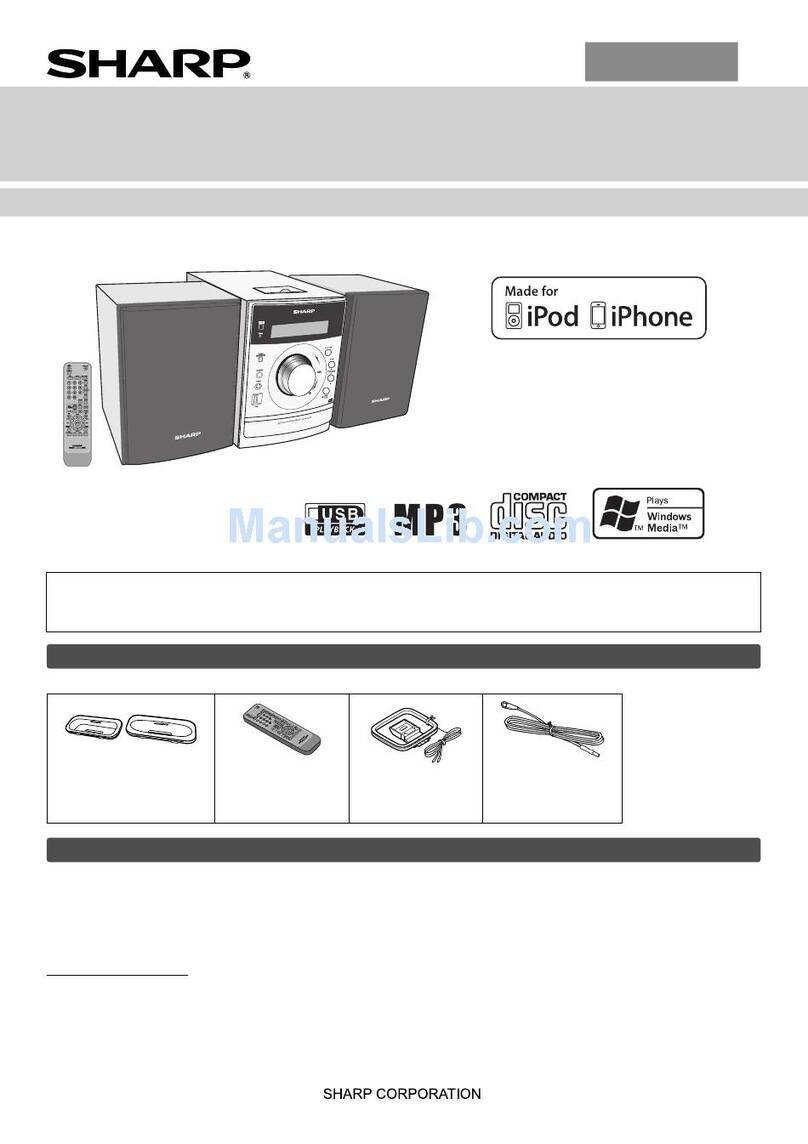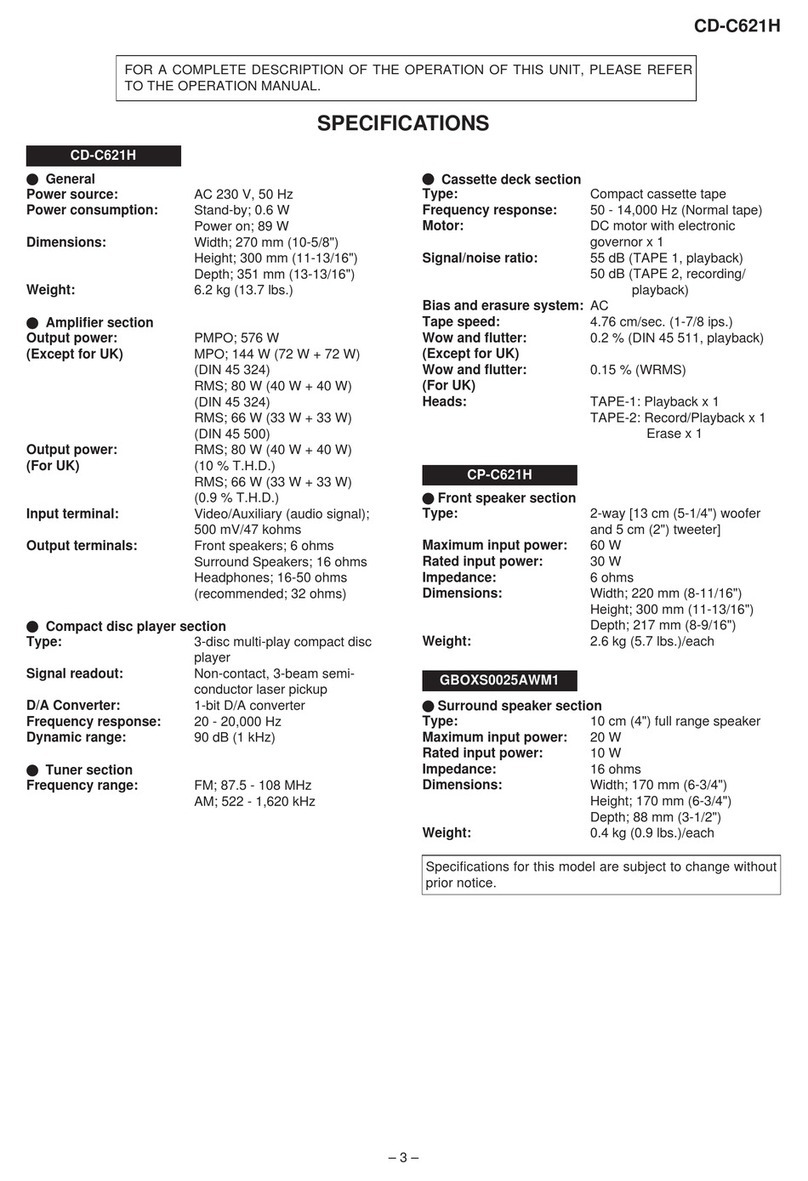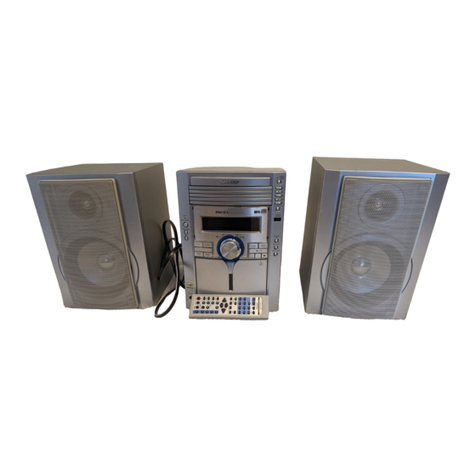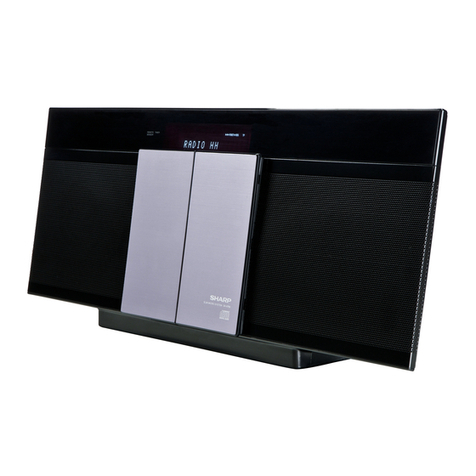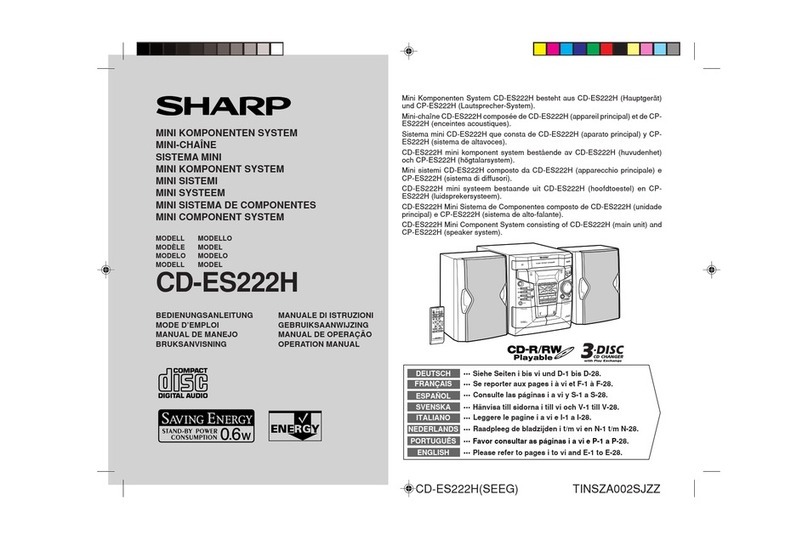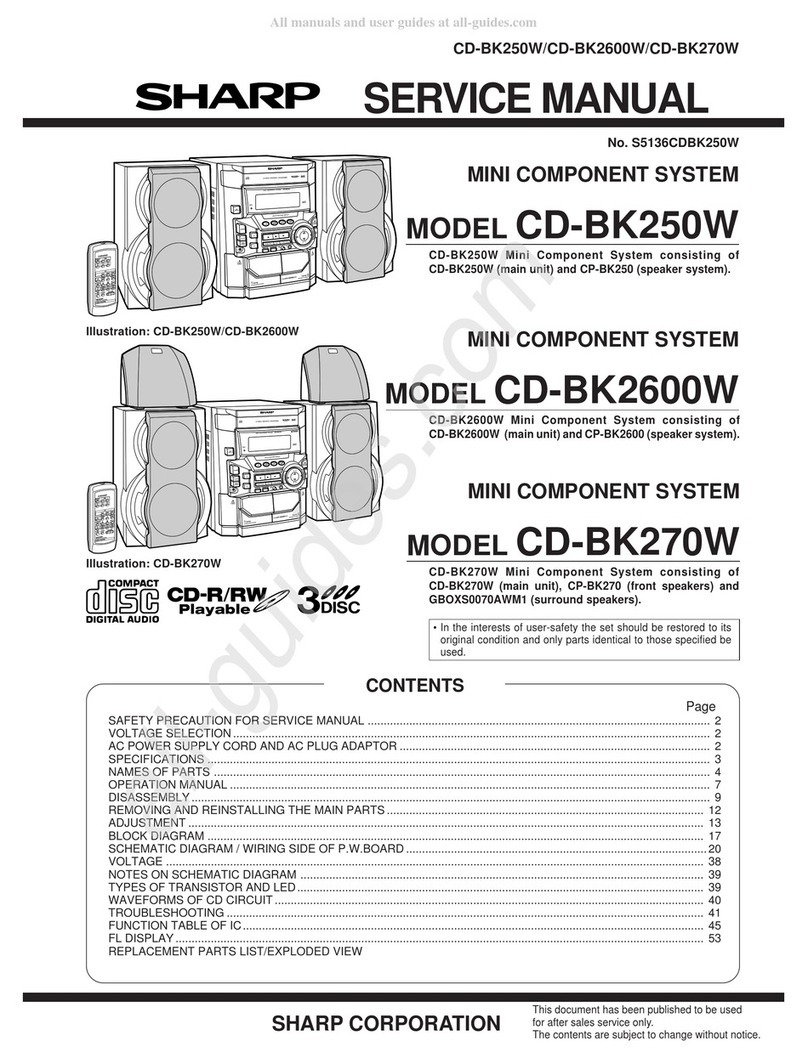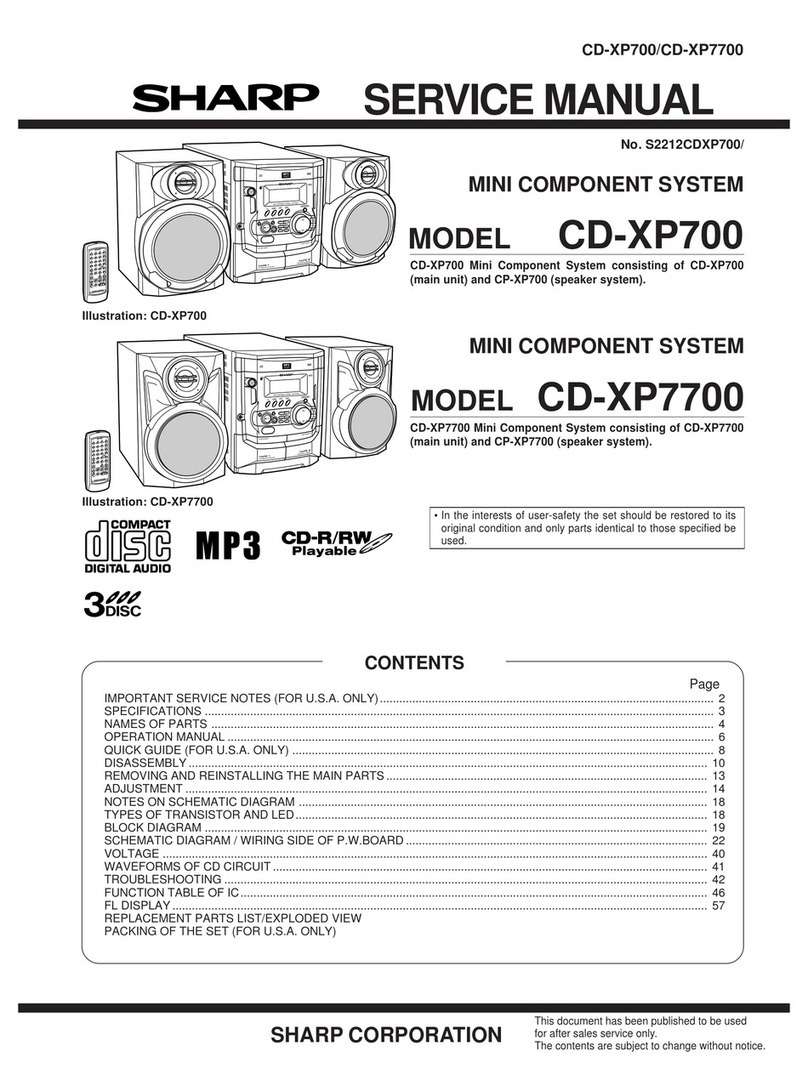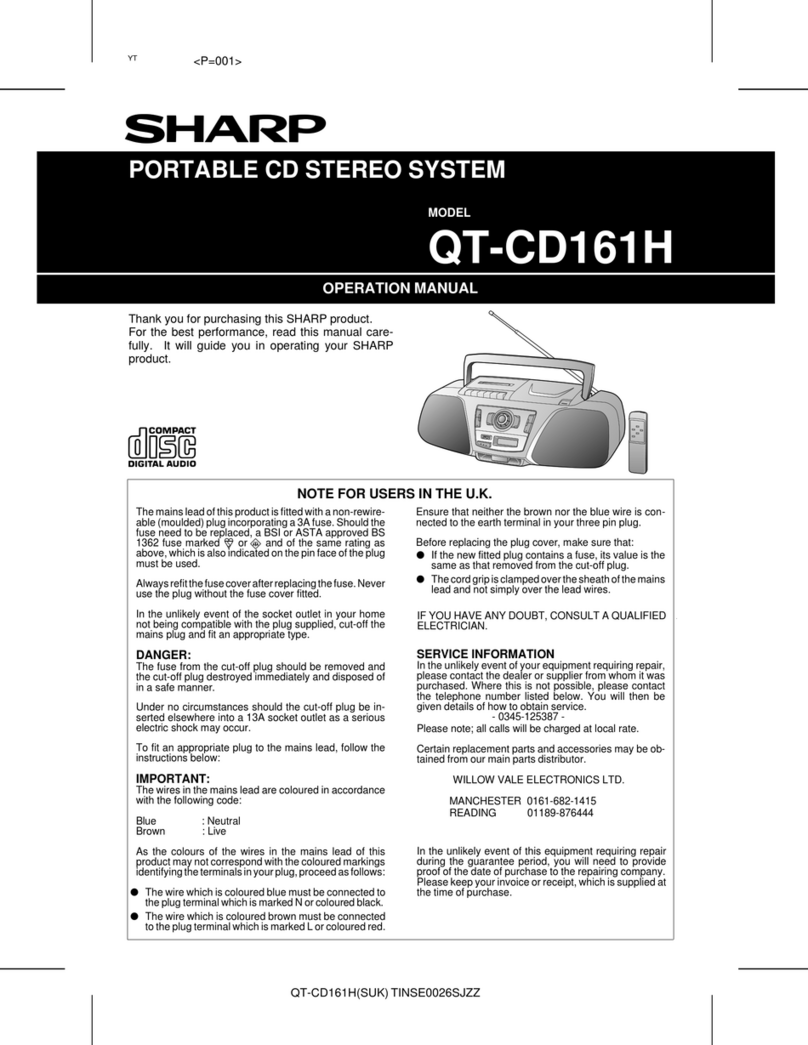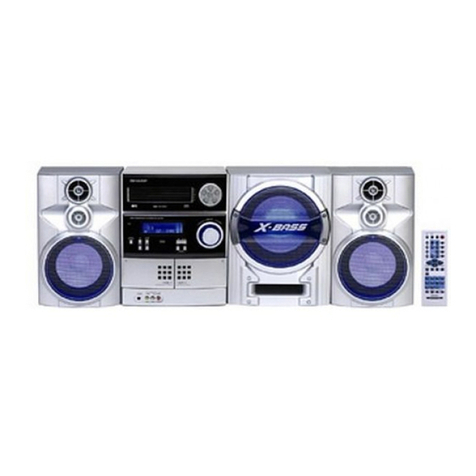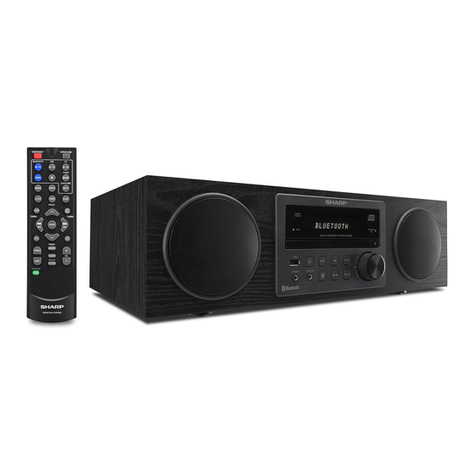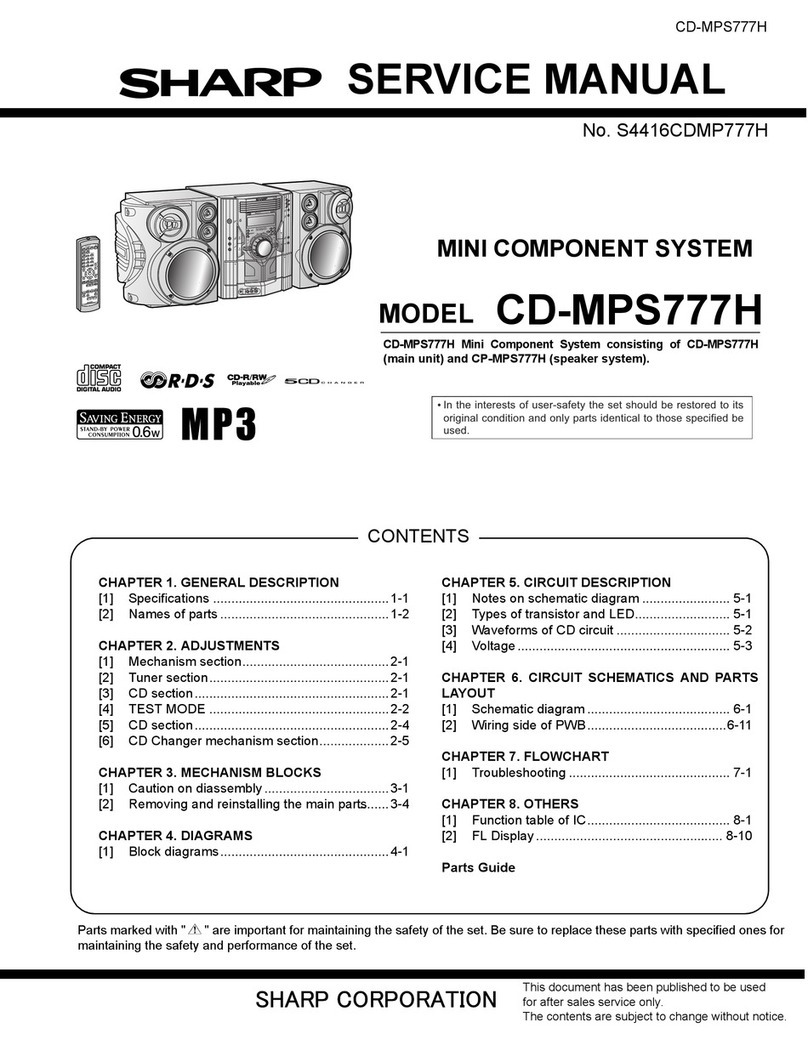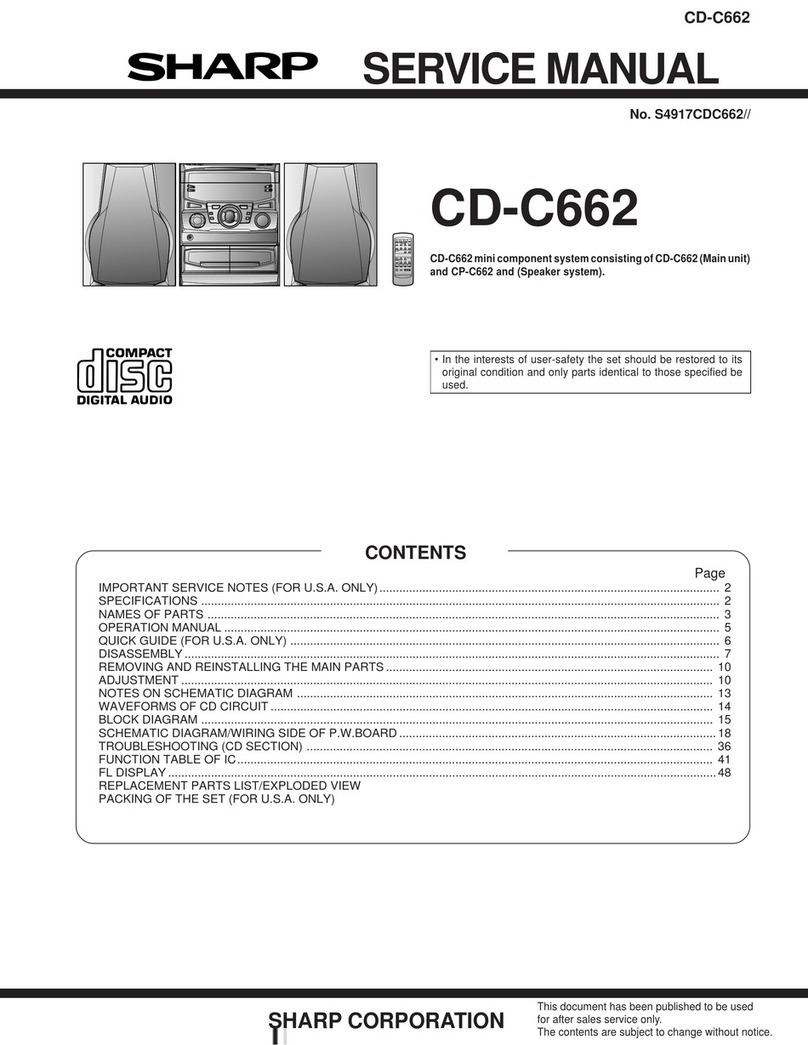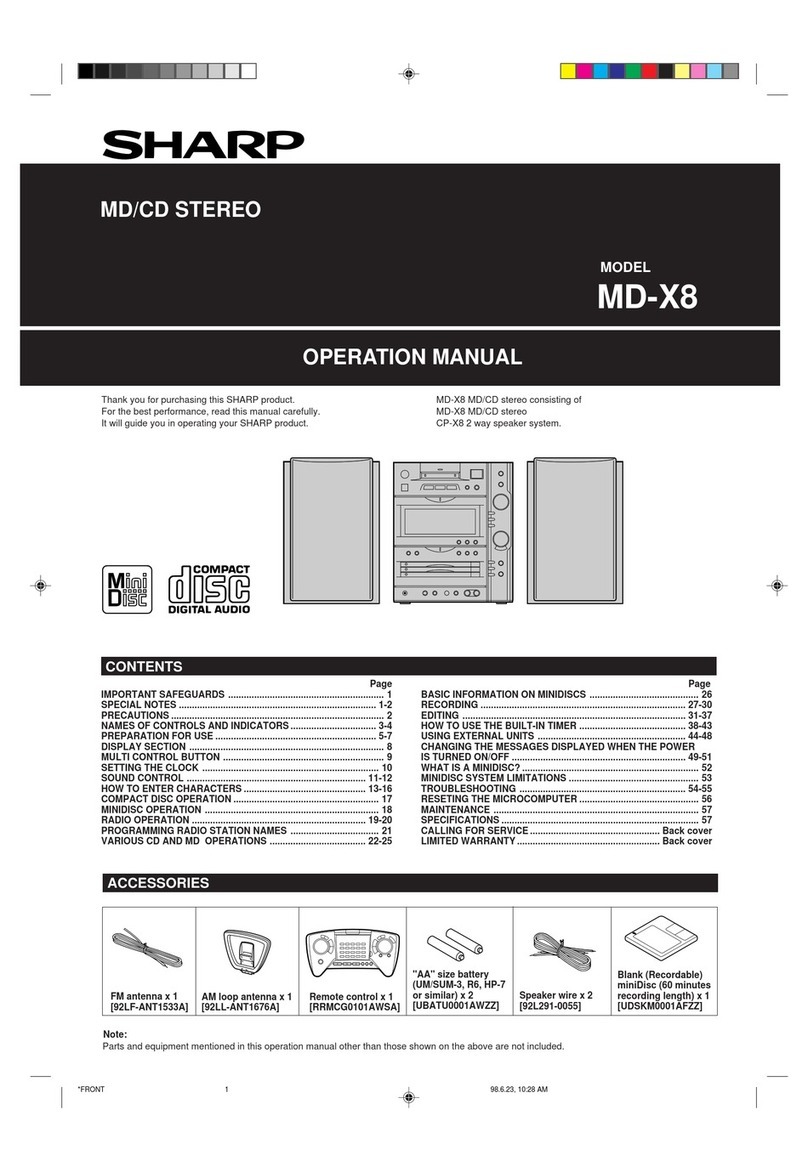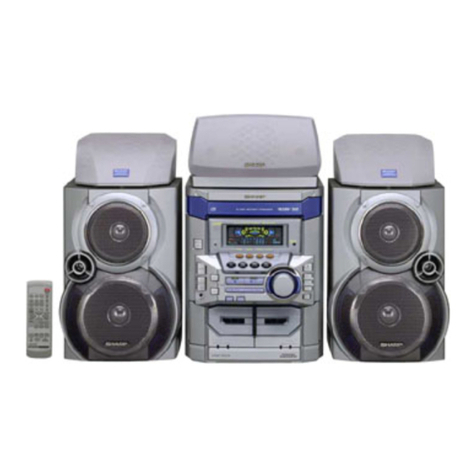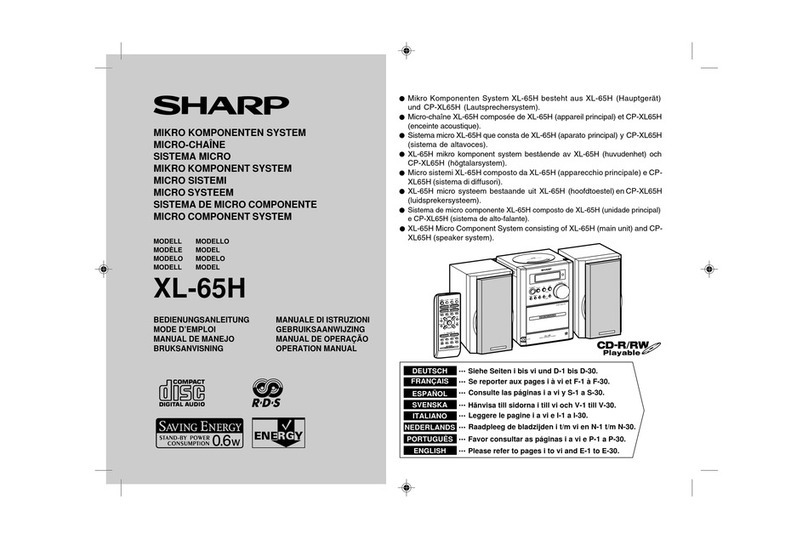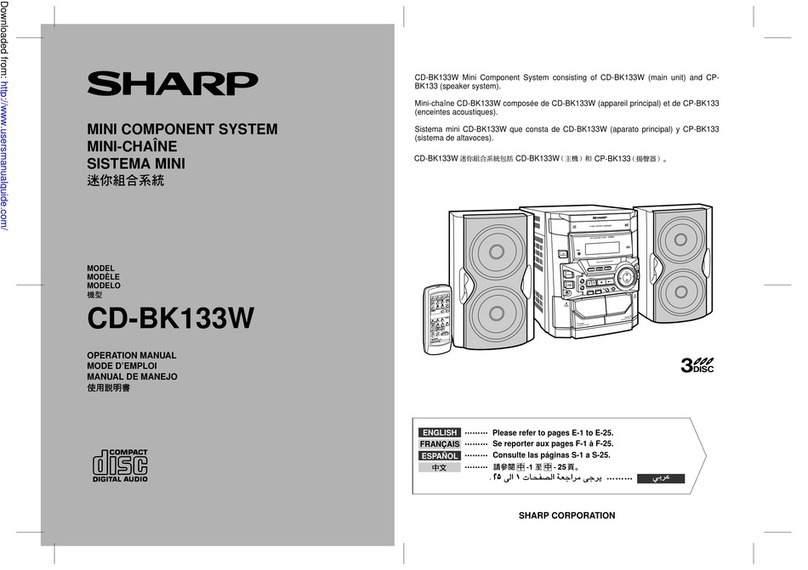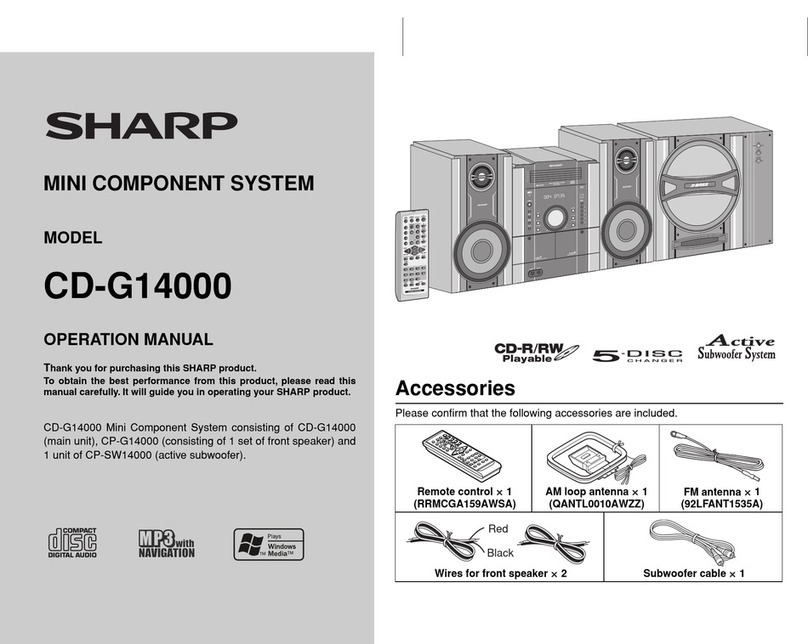XL-60H/70H
– 8 –
1 Side Panel
(Left/Right)
1. Screw .................. (A1) x8 8-1
2 Top Cabinet 1. Screw .................. (B1) x1 8-1
2. Socket ................. (B2) x2
3 Rear Panel 1. Screw .................. (C1) x3 8-1
2. Screw .................. (C2) x2
4 Power Amp. PWB 1. Screw .................. (D1) x1 8-2
2. Socket ................. (D2) x2
5 Main PWB/ 1. Screw .................. (E1) x3 8-3
Headphones PWB 2. Screw .................. (E2) x2
3. Bracket ................ (E3) x1
4. Socket ................. (E4) x3
5. Flat wire............... (E5) x1
6. Socket ................. (E6) x1
6 Jog Switch PWB 1. Socket ................. (F1) x1 8-3
2. Screw .................. (F2) x2
3. Knob .................... (F3) x1
7 Display PWB/ 1. Screw .................. (G1) x3 8-3
LED PWB 2. Screw .................. (G2) x3
(With Jog Motor 3. Bracket ................ (G3) x1
Holder) 4. Socket ................. (G4) x1
5. Hook .................... (G5) x2
6. Hook .................... (G6) x2
8 Front Panel 1. Screw .................. (H1) x1 8-3
2. Socket ................. (H2) x1
3. Screw .................. (H3) x1
9 Power PWB 1. Screw .................. (J1) x4 8-3
2. Screw .................. (J2) x1
3. Screw .................. (J3) x1
4. Bracket ................ (J4) x1
10 Tape Mechanism 1. Open the cassette holder 9-1
2. Screw .................. (K1) x4
11 CD PWB/ 1. Screw .................. (L1) x6 9-2
Open Close Switch 2. Socket ................. (L2) x4
PWB/CD Lid PWB 3. Hook .................... (L3) x1
(Note)
12 Digital Out PWB 1. Socket ................. (M1) x1 9-2
2. Screw .................. (M2) x1
13 CD Mechanism 1. Screw .................. (N1) x3 9-3
2. Screw .................. (N2) x3
DISASSEMBLY
Figure 8-2
Figure 8-3
STEP REMOVAL PROCEDURE FIGURE
Figure 8-1
XL-60H/70H
XL-60H/70H
Note:
After removing the connector for the optical pickup from the
connector, wrap the conductive aluminium foil around the
front end of connector remove to protect the optical pickup
from electrostatic damage.
Caution on Disassembly
Follow the below-mentioned notes when disassembling
the unit and reassembling it, to keep it safe and ensure
excellent performance:
1. Take cassette tape and compact disc out of the unit.
2. Be sure to remove the power supply plug from the wall
outlet before starting to disassemble the unit.
3.Take offnylon bandsorwire holderswherethey needto
beremovedwhendisassemblingtheunit.Afterservicing
theunit, besureto rearrangethe leadswhere they were
before disassembling.
4. Take sufficient care on static electricity of integrated
circuits and other circuits when servicing.
(A1)x2
ø3x10mm
(B2)x1 (C1)x2
ø3x10mm
Side Panel (Right)
Front
Panel
RearPanel (C1)x1
ø3x10mm
Side Panel
(Lift)
(B2)x1
(A1)x4
ø3x10mm
(A1)x1
ø3x10mm
(A1)x1
ø3x10mm
(B1)x1
ø3x10mm
Top Cabinet
CD PWB
Display
PWB
Main PWB
(C2)x2
ø3x8mm
(D1)x1
ø3x8mm Main PWB
Power
PWB
Power Amp.
PWB
(D2)x2
(G2)x2
ø2.5x10mm
(G2)x1
ø2.5x10mm
(G1)x3
ø2.5x14mm
(F2)x2
ø2.5x12mm
(E2)x1
ø3x8mm
Main PWB
Power PWB
Power PWB Main Power Transformer
Sub Power
Transformer
Front Panel
Display PWB
LED PWB
(J1)x4
ø4x6mm
(E2)x1
ø3x8mm
(E3)x1
(H2)x1
(J2)x1
ø3x10mm
(J3)x1
ø3x6mm (H1)x1
ø3x8mm
(H3)x1
ø3x6mm
(E4)x1
(E4)x1
(G3)x1
(E5)x1
(G5)x2
(G6)x2
(F3)x1
(E4)x1
(J4)x1
Tape
Mechanism
PWB
(G4)x1
Headphones
PWB
(F1)x1
(E1)x2
ø3x10mm
Sub Power Transformer
Jog Motor
Holder
Jog Switch
PWB
(E6)x1
(E1)x1
ø3x10mm
